Customer Variables
Custom variables can be defined either in the template scenario scripts or in custom scripts. They must be configured in the Custom/Variables column for the script in the dbo.SbcScriptTemplate table. Its recommended to define them with proper names such as “localhostname” and not simply variable1, variable2 etc. Once configured in both scripts and the database, they are displayed in the Scripts selection page in the Onboarding wizard (for Direct Routing services, see Onboarding Direct Routing Service) and can be called using REST API, for example, see Create Hosted Essentials Service.

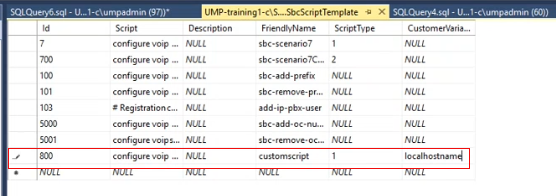
In the script itself, the custom variable must be defined with the notation "{{CustomVar.xxx}}. In the script example below, the defined customer variables are local host name=variable1 and tenant ID-variable2. These variables then appear as fields in the Onboarding wizard when the script is selected.
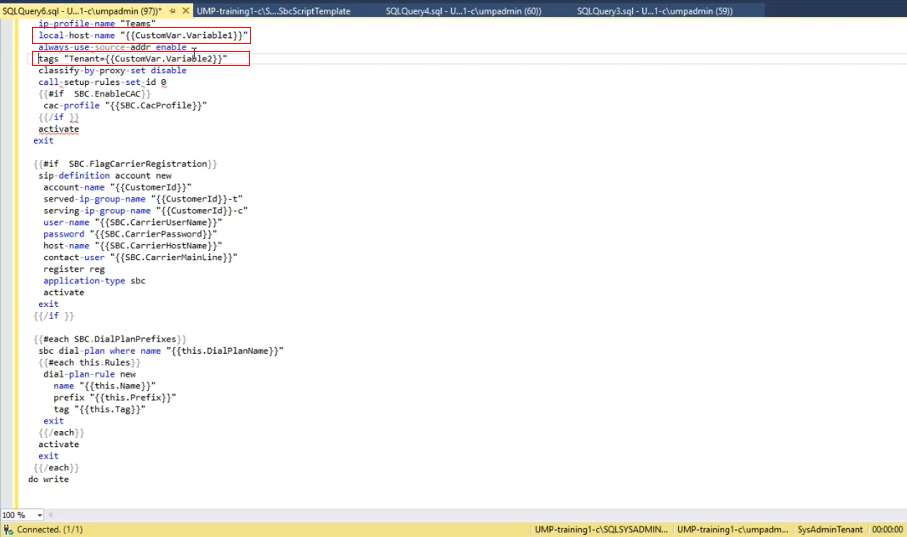
In the screen below, custom variables are defined for the IP-PBX.
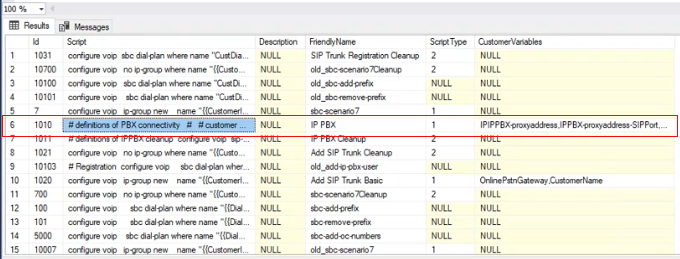
The Custom Variables defined above appear in the wizard when the IP PBX Onboarding script is selected in the wizard.
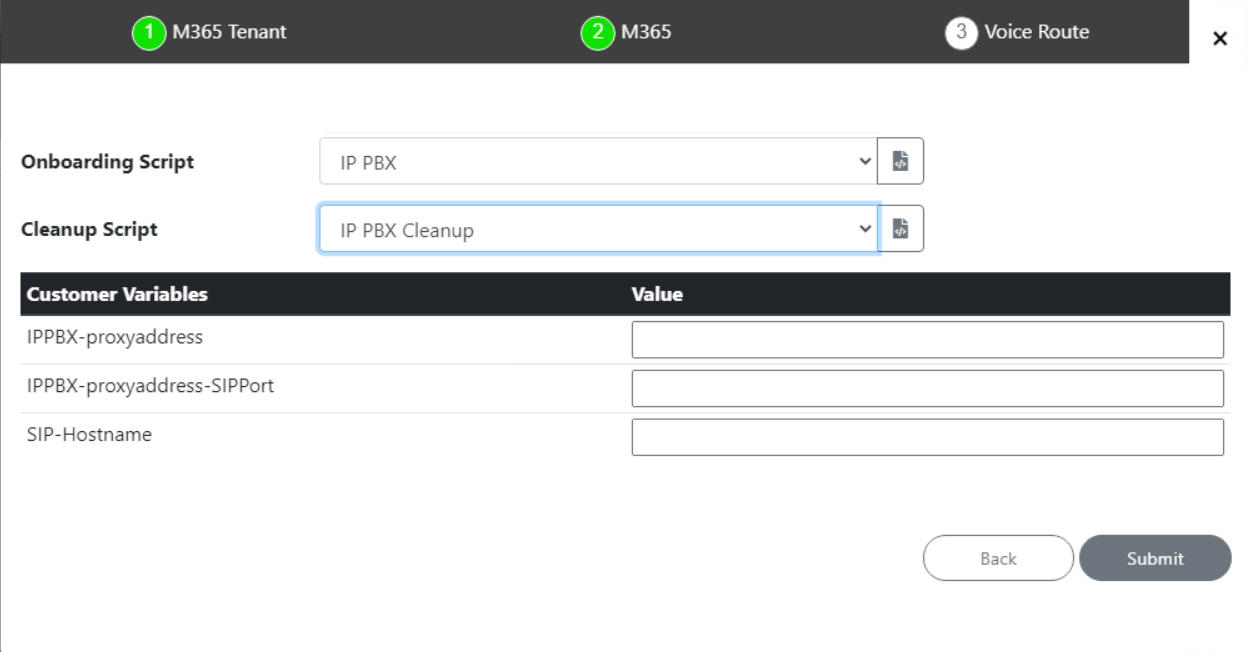
In cases where it’s not clear which type of value must be entered for the custom variable, then this must be verified with the SBC INI file. For example, for the Custom Variable shown below “IP‑PBX‑proxy address”, it’s not clear whether to enter an FQDN or IP address. In this case, the Message Manipulation User-defined string defined in the Outbound Message Manipulation rule must be verified on the SBC.
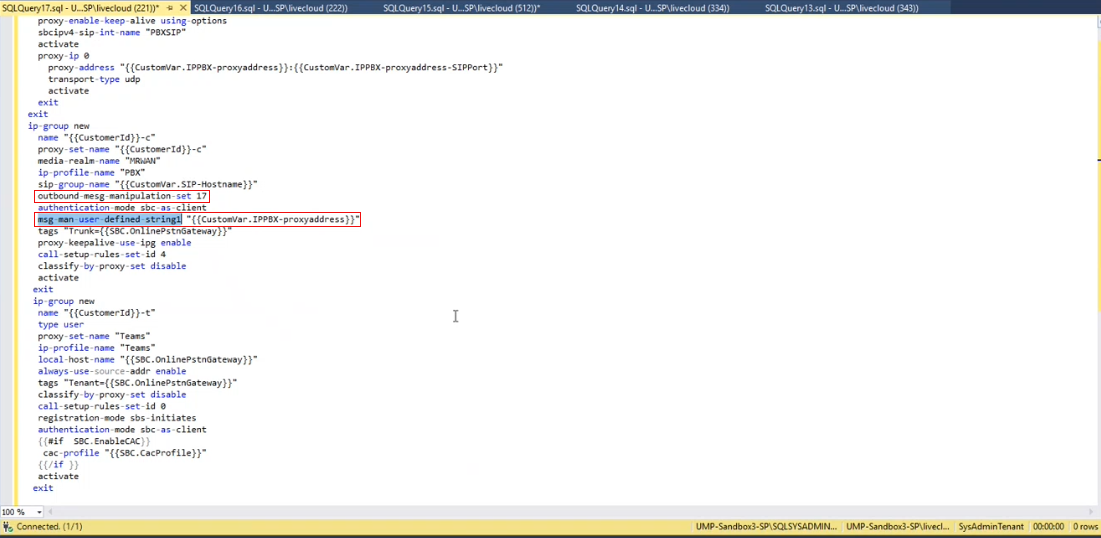
In a similar way, the custom variable SIP-Hostname is configured on the SBC as the sip-group-name. It’s necessary to verify on the SBC whether the value for this parameter is an IP-address or FQDN and whether its configured for a gateway or SBC call.
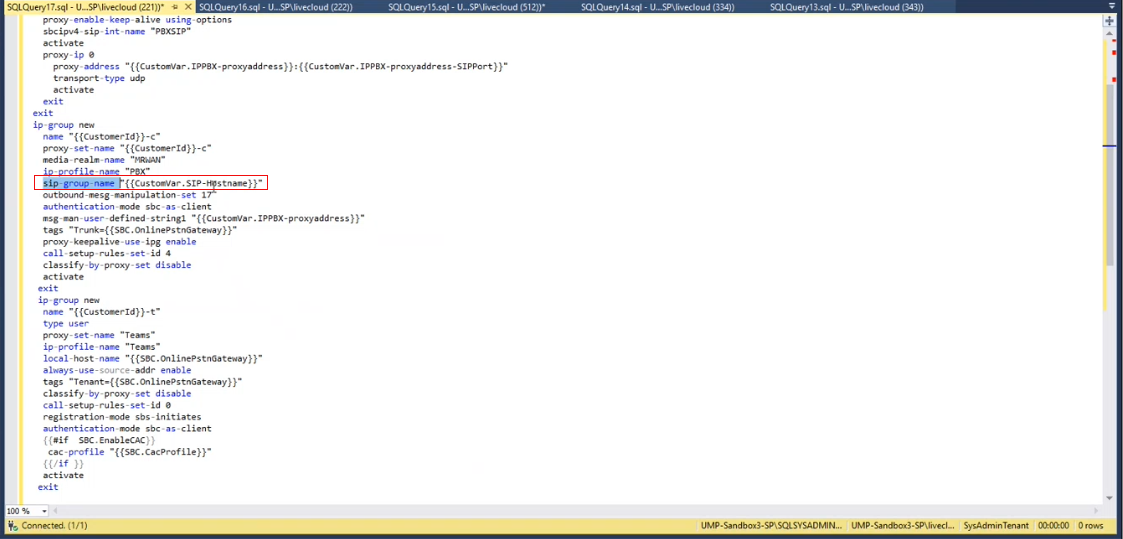
| ■ | The following example extraction shows how to configure custom variables for an IP-PBX: |
# definitions of PBX connectivity
#
# customer variables:
# IPPBX-proxyaddress
# IPPBX-proxyaddress-SIPPort
# SIP-Hostname
configure voip
proxy-set new
proxy-name "{{CustomerId}}-c"
proxy-enable-keep-alive using-options
srd-name "PBXSRD"
sbcipv4-sip-int-name "PBXSIP"
activate
proxy-ip 0
proxy-address "{{CustomVar.IPPBX-proxyaddress}}:{{CustomVar.IPPBX-proxyaddress-SIPPort}}"
transport-type udp
activate
exit
exit
ip-group new
name "{{CustomerId}}-c"
proxy-set-name "{{CustomerId}}-c"
media-realm-name "MRWAN"
ip-profile-name "3CX"
sip-group-name "{{CustomVar.SIP-Hostname}}"
srd-name "PBXSRD"
outbound-mesg-manipulation-set 17
authentication-mode sbc-as-client
msg-man-user-defined-string1 "{{CustomVar.IPPBX-proxyaddress}}"
tags "Trunk={{SBC.OnlinePstnGateway}}"
proxy-keepalive-use-ipg enable
call-setup-rules-set-id 4
classify-by-proxy-set disable
activate
exit
ip-group new
name "{{CustomerId}}-t"
type user
proxy-set-name "Teams"
ip-profile-name "Teams"
srd-name "DefaultSRD"
outbound-mesg-manipulation-set 14
local-host-name "{{SBC.OnlinePstnGateway}}"
always-use-source-addr enable
tags "Tenant={{SBC.OnlinePstnGateway}}"
classify-by-proxy-set disable
call-setup-rules-set-id 7
registration-mode sbs-initiates
authentication-mode sbc-as-client
{{#if SBC.EnableCAC}}
cac-profile "{{SBC.CacProfile}}"
{{/if }}
activate
exit
sbc dial-plan where name "PBXDomains"
dial-plan-rule new
name "{{CustomerId}}"
prefix "{{sbcEscape SBC.OnlinePstnGateway}}"
tag "{{CustomVar.SIP-Hostname}}"
activate
exit
exit
| ■ | The following example extraction shows how to configure custom variables for LBR Network Topology: |
# Script variables
[String]$OnlinePstnGateway="{{SBC.OnlinePstnGateway}}"
[String]$CustomerId="{{SBC.SbcSiteName}}"
[String]$IPNetwork="{{CustomVar.IP-Network}}"
[String]$IPSubnet="{{CustomVar.IP-SubnetBits}}"
[String]$TrustedIPNetwork="{{CustomVar.Trusted-IP-Network}}"
[String]$TrustedIPSubnet="{{CustomVar.Trusted-IP-SubnetBits}}"